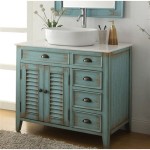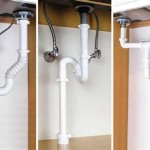How to Keep Mold Out Of Bathroom Closet Doors
Bathrooms, by their very nature, are humid environments. Showers, baths, and even everyday sink usage introduce significant moisture into the air. This humidity, when combined with poor ventilation and organic materials like wood or drywall, creates a breeding ground for mold. Bathroom closet doors, often neglected in regular cleaning routines, can be particularly susceptible to mold growth. This article details strategies for preventing mold from taking hold on bathroom closet doors, ensuring a healthier and more aesthetically pleasing space.
Understanding the Mold Problem in Bathrooms
Mold thrives in damp, dark, and poorly ventilated areas. It feeds on organic materials present in building components, including paper-faced drywall, wooden door frames, dust, and even soap residue. Bathroom closet doors are often located in close proximity to sources of moisture, and their enclosed nature restricts airflow, making them ideal habitats for mold proliferation. Identifying the underlying causes of moisture buildup is crucial for effective mold prevention.
Several factors contribute to high humidity levels in bathrooms. Inadequate ventilation is a primary culprit. Bathrooms lacking functional exhaust fans or windows that can be opened readily experience elevated humidity levels after showers or baths. Even with an exhaust fan, its effectiveness depends on its size and how frequently it is used. Furthermore, leaky plumbing, dripping faucets, and condensation on cold surfaces can all contribute to moisture accumulation. These seemingly small issues can gradually increase humidity, creating conditions conducive to mold growth.
The material composition of the closet door also plays a role. Wooden doors, especially those with porous finishes or exposed edges, are more vulnerable to moisture absorption than doors made of materials like fiberglass or metal. Similarly, drywall surrounding the door frame can readily absorb moisture, providing a food source for mold. Even painted surfaces can harbor microscopic cracks and imperfections that allow moisture to penetrate.
Implementing Preventative Cleaning and Maintenance Routines
Proactive cleaning and maintenance are essential for preventing mold growth on bathroom closet doors. A regular cleaning schedule should be established and adhered to, focusing on removing moisture and organic debris that can support mold colonization. The following steps outline a comprehensive approach:
Regular Cleaning: Clean the bathroom closet doors at least once a week, or more frequently if the bathroom experiences high humidity. Use a mild detergent solution mixed with warm water. Avoid harsh chemicals that can damage the door's finish. Wipe down the entire surface of the door, including the edges and any crevices or decorative moldings. Pay particular attention to areas that tend to accumulate moisture, such as the bottom of the door and around the handle.
Moisture Removal: After showering or bathing, immediately dry any water droplets or condensation that have accumulated on the closet door or surrounding surfaces. Use a clean towel or squeegee to remove excess moisture. Encourage family members to do the same. This simple step can significantly reduce the humidity level and prevent water from seeping into the door's material.
Ventilation Practices: Ensure adequate ventilation in the bathroom. Always run the exhaust fan during and for at least 30 minutes after showering or bathing. If the bathroom has a window, open it to allow fresh air to circulate. Regular ventilation helps to remove moist air, reducing humidity levels and preventing mold growth. Consider installing a timer on the exhaust fan to ensure it runs for the appropriate duration.
Inspect for Leaks: Routinely inspect the plumbing fixtures in the bathroom, including faucets, showerheads, and toilets, for any signs of leaks. Repair any leaks promptly to prevent water damage and excessive humidity. Even small, seemingly insignificant leaks can contribute to mold growth over time. Check under sinks and around toilet bases for any signs of water stains or dampness.
Address Condensation: Condensation can form on cold surfaces, particularly during the winter months. To minimize condensation, ensure that the bathroom is properly insulated. Consider using a humidifier in other parts of the house to balance the overall humidity levels. Wiping down surfaces prone to condensation regularly can also help prevent mold growth.
Controlling Humidity and Improving Ventilation
Effective humidity control is paramount in preventing mold growth. While regular cleaning helps to remove existing moisture, addressing the underlying causes of high humidity is crucial for long-term prevention. The following strategies can significantly reduce humidity levels in the bathroom:
Upgrade Ventilation: Evaluate the existing exhaust fan and determine if it is adequately sized for the bathroom. The Home Ventilating Institute (HVI) provides guidelines for determining the appropriate fan size based on the bathroom's square footage. Consider upgrading to a more powerful and quieter fan. Ensure that the exhaust fan vents directly to the outside, not into the attic or another enclosed space. Regularly clean the exhaust fan to remove dust and debris that can hinder its performance.
Dehumidifiers: In particularly humid environments or in bathrooms with chronic moisture problems, consider using a dehumidifier. A dehumidifier removes excess moisture from the air, creating a less favorable environment for mold growth. Choose a dehumidifier that is appropriately sized for the bathroom and empty the water reservoir regularly.
Shower Practices: Encourage shorter showers to reduce the amount of steam generated. Consider using a shower curtain or door to contain moisture within the shower area. Ensure that the shower curtain or door is properly sealed to prevent water from escaping. Regularly clean the shower curtain or door to remove soap scum and mildew.
Proper Sealing: Ensure that the bathroom is properly sealed to prevent moisture from migrating into the walls and floors. Caulk around bathtubs, showers, sinks, and toilets to create a waterproof barrier. Repair any cracks or gaps in the walls or ceiling. Proper sealing helps to contain moisture within the bathroom and prevent it from reaching vulnerable areas.
Plant Selection: While it may seem counterintuitive, certain houseplants can help to absorb moisture from the air. Plants like peace lilies, snake plants, and Boston ferns are known for their air-purifying and humidity-reducing qualities. Choose plants that thrive in humid environments and place them strategically in the bathroom.
Selecting Mold-Resistant Materials and Finishes
When renovating a bathroom or replacing closet doors, choosing mold-resistant materials and finishes can significantly reduce the risk of mold growth. The following options offer enhanced resistance to moisture and mold:
Mold-Resistant Drywall: Opt for mold-resistant drywall, also known as green board, for bathroom walls and ceilings. This type of drywall is treated with a special coating that inhibits mold growth. It is particularly important to use mold-resistant drywall in areas that are prone to moisture, such as around showers and bathtubs.
Waterproof Paint: Use waterproof or moisture-resistant paint on walls, ceilings, and closet doors. These paints are formulated to repel water and prevent it from penetrating the surface. Choose paints that contain mildewcides, which further inhibit mold growth. Apply multiple coats of paint for optimal protection.
Synthetic Door Materials: Consider using closet doors made of synthetic materials, such as fiberglass or vinyl. These materials are naturally resistant to moisture and mold. They are also easy to clean and maintain. Avoid using wooden doors in bathrooms with high humidity levels.
Proper Sealing of Wood: If using a wooden door is unavoidable, ensure that it is properly sealed with a waterproof sealant. Apply multiple coats of sealant to all surfaces of the door, including the edges and any exposed wood. Regularly inspect the sealant and reapply as needed.
Epoxy Grout: When tiling bathroom floors or walls, use epoxy grout instead of cement-based grout. Epoxy grout is waterproof and resistant to staining and mold growth. It is also easier to clean and maintain than cement-based grout.
By implementing these preventative measures, homeowners can significantly reduce the risk of mold growth on bathroom closet doors, ensuring a healthier and more aesthetically pleasing living environment. Regular cleaning, effective humidity control, and the use of mold-resistant materials are all essential components of a comprehensive mold prevention strategy.

Closet Mold Moldy Clothes Biobalance

How To Prevent Mold From Growing In Your Closet

Mold In Clothes Here S How To Keep Your Wardrobe Moisture Free Style Degree

What Causes Mold In Closets Valleywide Restoration

How To Hinder Mold Mildew Growth In Your Closets

14 Ways To Prevent Mold Growth In Your Closets

What Can I Do About Mold On My Door Hometalk

How To Hinder Mold Mildew Growth In Your Closets

10 Tips For Protecting Your Closets From Mold

Mold In Closet How To Prevent And Get Rid Of Closets
Related Posts







